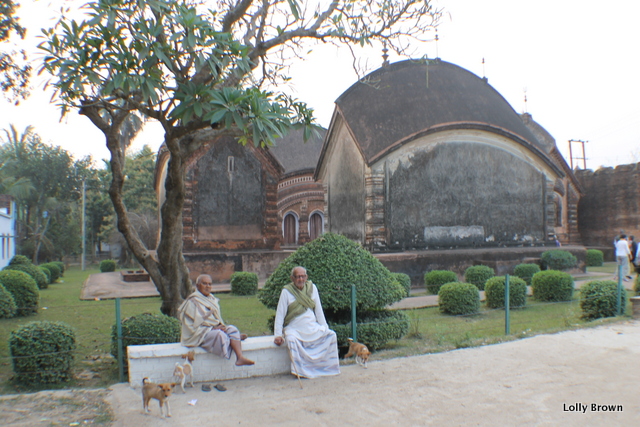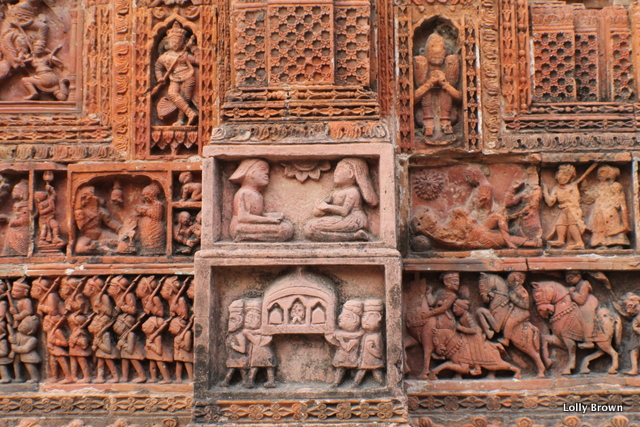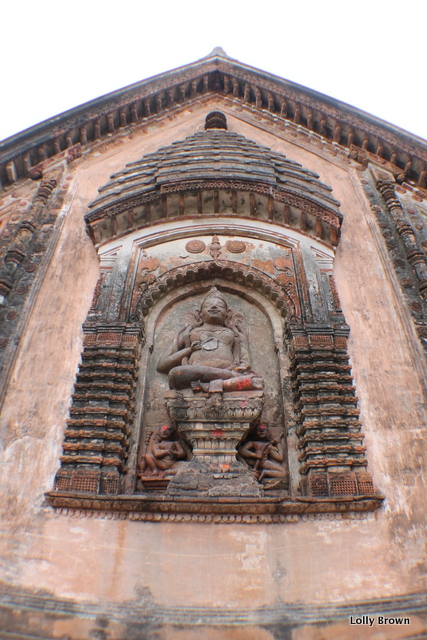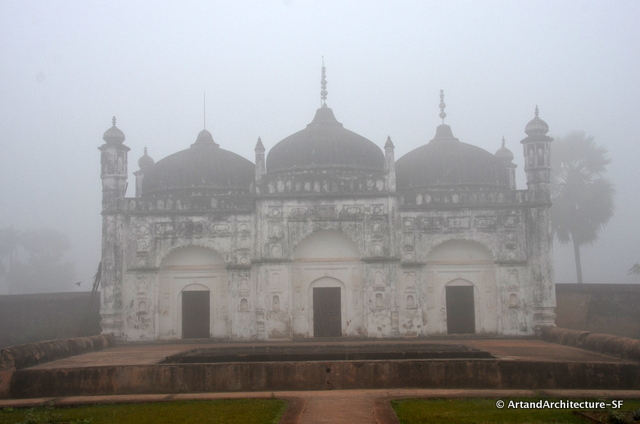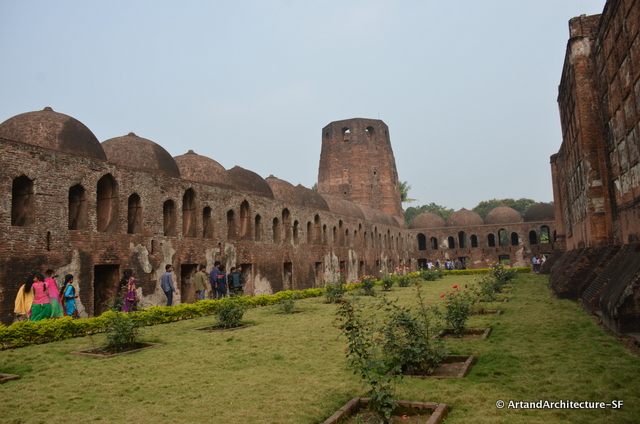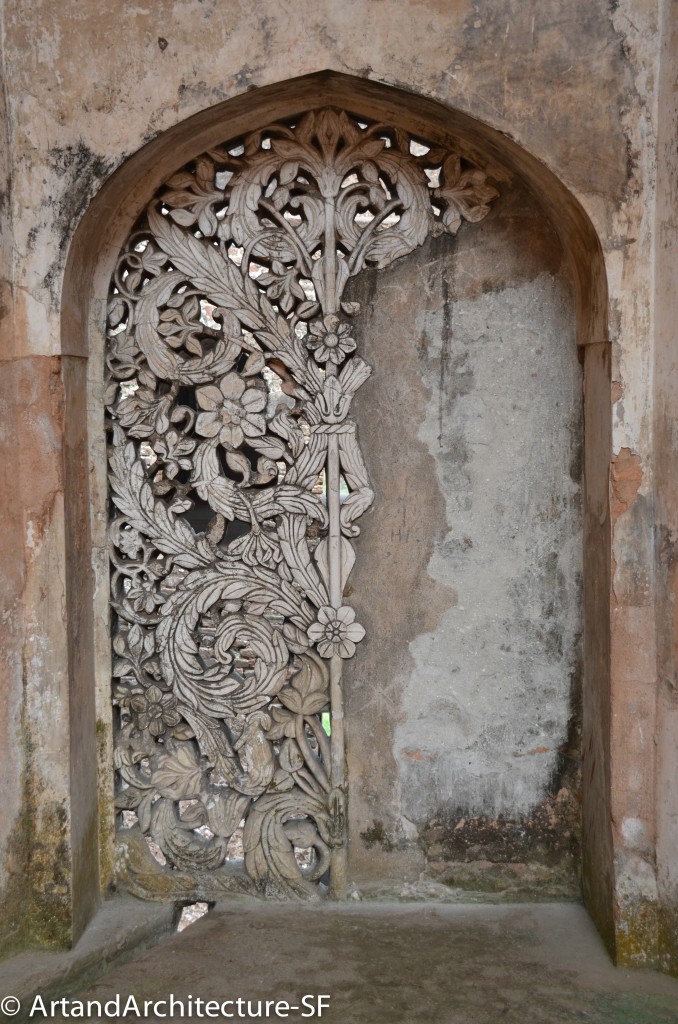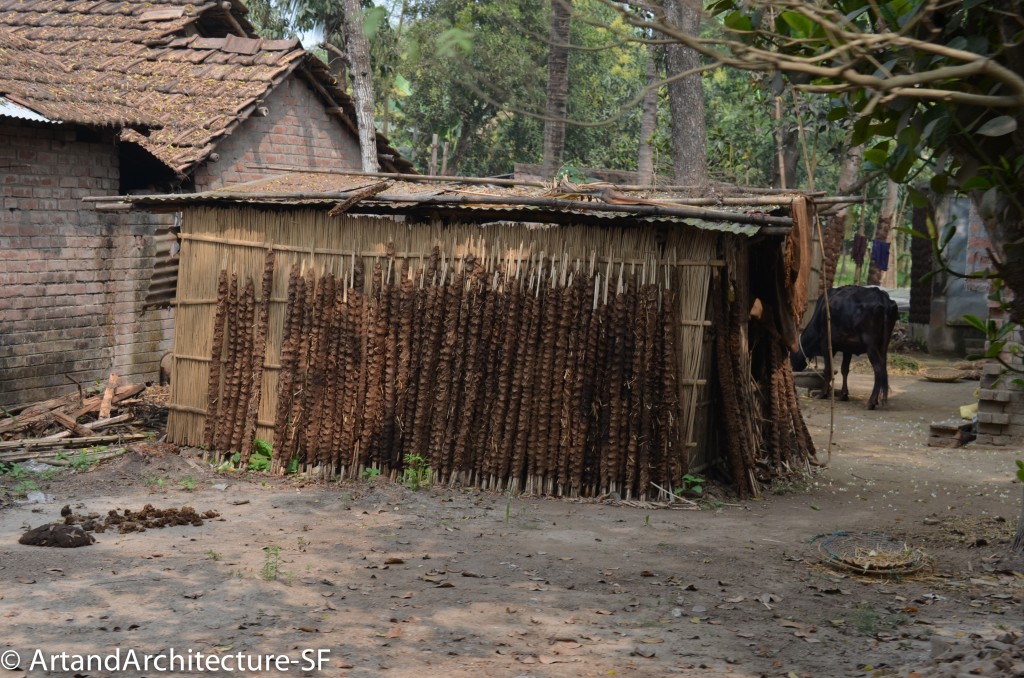February 2015
Bengal is proving to be horribly hot and humid, it is lovely on the boat as the breezes blow but we have been off for a few excursions.
The first to the town of Baranagar for a visit to the Jor Banla Shiva temple. Constructed between 1716 and 1795 by the tax collector Rani Bhabani. The temple has a triple arched entrance and is completely decorated with small ornamental terracotta plaques. The plaques tell the story of Ramayana, the life of Krishna and the various incarnations of Devi.
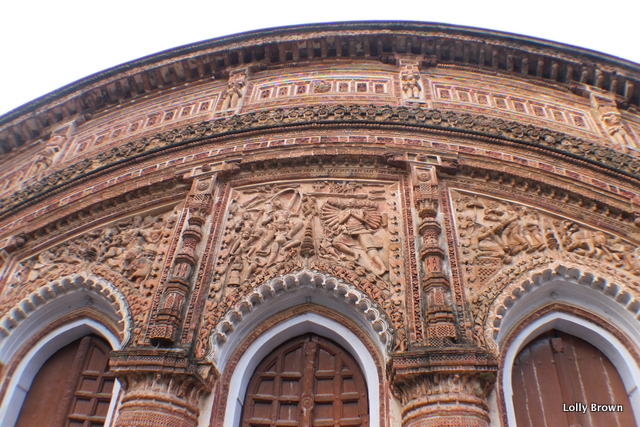 Bishnapur was the capital of the Mallabhumi kingdom between the 17th and 18th century. The town is renowned for is many elaborately adorned terracotta temples made of the local red clay, Shama Raya being the most imposing.
Bishnapur was the capital of the Mallabhumi kingdom between the 17th and 18th century. The town is renowned for is many elaborately adorned terracotta temples made of the local red clay, Shama Raya being the most imposing.
*
The next day started with an early morning walk to the Khusbagh (Garden of Happiness) the burial grounds of the Nawabs of Bengal. Nawabs is an honorific title bestowed by the reigning Mughal Emperor to semi-autonomous Muslim rulers of princely states in South Asia.
 Then a Tonga (horse driven carriage) ride to the Katra Mosque. The mosque was built by the first Nawab of Murshidabad, Quli Kahn in 1724 using materials from Hindu temples that were destroyed in order to build it. The mosque was damaged severely in 1897 by an earthquake.
Then a Tonga (horse driven carriage) ride to the Katra Mosque. The mosque was built by the first Nawab of Murshidabad, Quli Kahn in 1724 using materials from Hindu temples that were destroyed in order to build it. The mosque was damaged severely in 1897 by an earthquake.
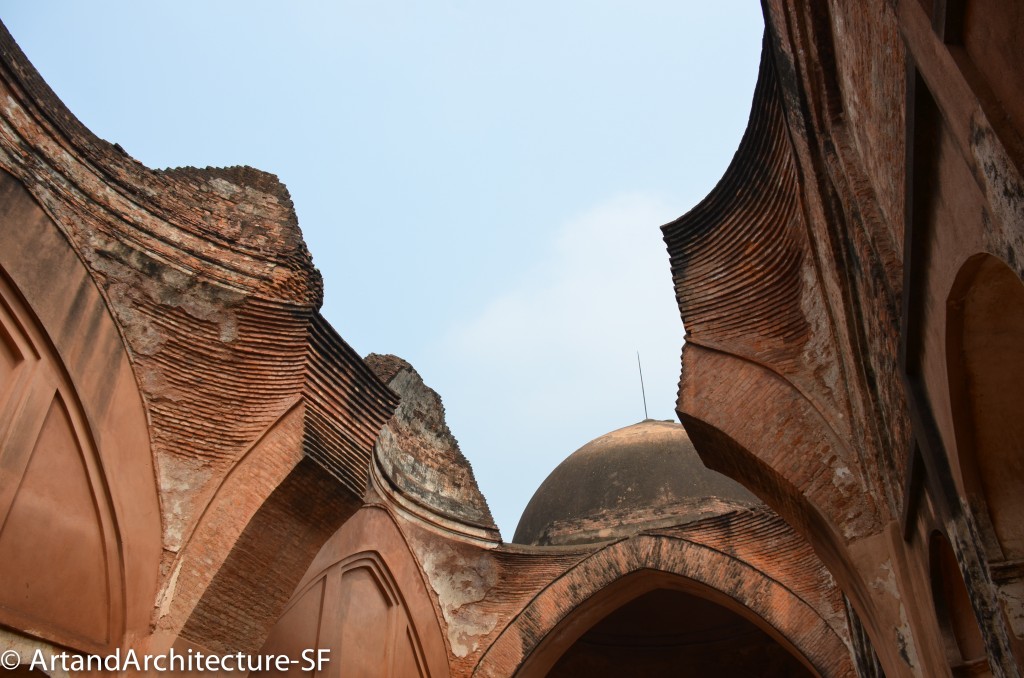 A horse ride back to the Hazarduari (a thousand doors) Palace which is now the historic Museum of Murshidabad. The palace was built during the reign of Nawab Nazim Humayun (1824-1838) by Scottish architect McLeod Duncan. This Greek palace is a great representation of Indo-Saracenic architecture, and one-upmanship. There are over one thousand doors (some false), large corridors and a magnificent domed receiving room. Sadly no pictures were allowed inside.
A horse ride back to the Hazarduari (a thousand doors) Palace which is now the historic Museum of Murshidabad. The palace was built during the reign of Nawab Nazim Humayun (1824-1838) by Scottish architect McLeod Duncan. This Greek palace is a great representation of Indo-Saracenic architecture, and one-upmanship. There are over one thousand doors (some false), large corridors and a magnificent domed receiving room. Sadly no pictures were allowed inside.
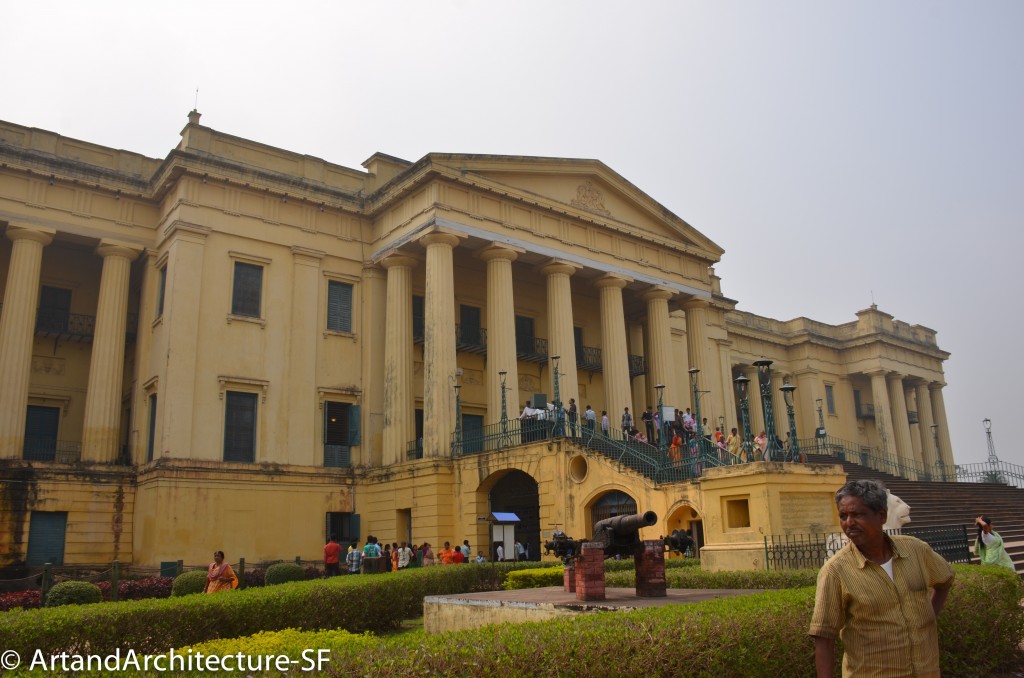 The Indo-Saracenic Revival (also known as Indo-Gothic, Hindoo or Hindu-Gothic, Mughal-Gothic, Neo-Mughal) was an architectural style movement by British architects in the late 19th century in British India. It drew elements from native Indo-Islamic and Indian architecture, and combined it with the Gothic revival and Neo-Classical styles favored in Victorian Britain. Saracenic was a term used by the ancient Romans to refer to a people who lived in desert areas in and around the Roman province of Arabia, and who were distinguished from Arabs.
The Indo-Saracenic Revival (also known as Indo-Gothic, Hindoo or Hindu-Gothic, Mughal-Gothic, Neo-Mughal) was an architectural style movement by British architects in the late 19th century in British India. It drew elements from native Indo-Islamic and Indian architecture, and combined it with the Gothic revival and Neo-Classical styles favored in Victorian Britain. Saracenic was a term used by the ancient Romans to refer to a people who lived in desert areas in and around the Roman province of Arabia, and who were distinguished from Arabs.
